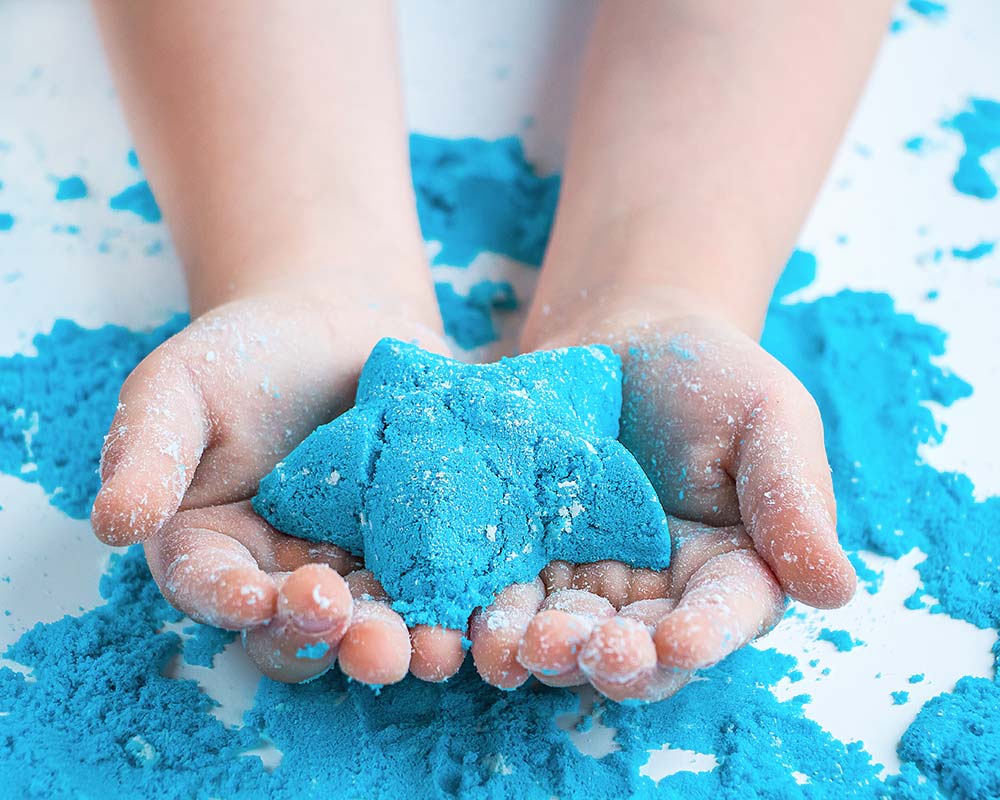Sand therapy, also known as sandplay therapy or sand tray therapy, is a powerful therapeutic approach used to help children express and process their emotions in a safe and creative environment. This modality leverages the natural inclination of children to play as a means of communication and healing. In sand therapy, children use a sandbox and miniature figures to create scenes that reflect their inner world, allowing them to explore and articulate complex feelings and experiences without the need for words. This form of therapy is particularly effective for children who may struggle to verbalize their thoughts and emotions, providing them with a nonverbal medium to achieve emotional insight, regulation, and healing.

How it Works
Sand therapy is a therapeutic technique used by mental health professionals to help clients express and process emotions, resolve conflicts, and gain insight into their lives.
It involves the use of a sandbox and a variety of miniature figures, objects, and toys. This therapeutic approach fosters creativity, imagination, and problem-solving skills, while also providing a safe space for exploration and healing.
Key Elements of Sand Play
Here are the key elements and principles of sand therapy for children:
- Sandbox and Miniatures: The core components of sand therapy are a sandbox (often referred to as a sandtray) filled with sand and a collection of miniature figures and objects. These figures can include people, animals, buildings, vehicles, natural elements, and symbolic items.
- Nonverbal Expression: Sand therapy provides a nonverbal medium for clients to express their thoughts, feelings, and experiences. This can be particularly useful for individuals who find it difficult to articulate their emotions or who have experienced trauma.
- Creating a Scene: Clients are invited to select and place miniatures in the sandtray to create a scene or world that reflects their inner state. This process allows them to externalize and visualize their inner experiences.
- Therapeutic Process: The therapist observes the client’s choices and the evolving scenes in the sandtray. Through this process, the therapist and client can explore the symbolic meaning of the created scenes, facilitating deeper understanding and healing.
- Safe and Contained Environment: The sandtray provides a contained space where clients can safely explore and work through difficult emotions and experiences. The tactile nature of the sand can also have a calming and grounding effect.
- Developmental and Healing: Sand therapy can be used with children, adolescents, and adults. For children, it is often integrated with play therapy techniques, while for adults, it can be a powerful tool for accessing unconscious material and promoting self-awareness.
- Applications: Sand therapy is used to address a wide range of issues, including trauma, anxiety, depression, grief, relationship problems, and behavioral issues. It is particularly effective in helping clients process and integrate traumatic experiences.
- Therapeutic Relationship: The therapist’s role is to provide a supportive and nonjudgmental presence, facilitating the client’s exploration and expression without imposing interpretations. The therapist may gently guide the process and offer reflections based on the client’s work in the sandtray.
- Holistic Approach: Sand therapy is often used as part of a holistic therapeutic approach, integrating elements from other therapeutic modalities such as Jungian therapy, Gestalt therapy, and expressive arts therapies.
Sand therapy has proven to be a highly effective tool for working with children, offering a unique and nonverbal way for them to express their thoughts, feelings, and experiences. Through the act of playing with sand and using miniature figures and objects, children can communicate and process complex emotions and experiences that may be difficult to articulate verbally.
Not only does sand therapy support children in developing emotional regulation and coping strategies but it also strengthens the therapeutic relationship, promoting a deeper understanding of their inner world. Overall, sand therapy stands out as a valuable and impactful method for therapists to connect with children and facilitate meaningful therapeutic outcomes.

